The Effect of Applying UV LED-Cured Varnish to Metalized Printing Elements during Cold Foil Lamination
Abstract
:1. Introduction
2. Theoretical Basis
2.1. Lamination
2.2. Printing of Decorative Metalized Foil

3. Materials and Methods
- run(“HSB Stack”);
- run(“Stack to Images”);
- selectWindow(“Saturation”);
- close();
- selectWindow(“Hue”);
- close();
- selectWindow(“Brightness”);
- run(“Options...”, “iterations = 1 count = 1”);
- setOption(“BlackBackground”, false);
4. Results and Discussion
5. Conclusions
Author Contributions
Funding
Institutional Review Board Statement
Informed Consent Statement
Data Availability Statement
Conflicts of Interest
References
- Aliofkhazraei, M.; Nasar, A.; Chipara, M.; Laidani, N.B.; De Hosson, J.T.M. Handbook of Modern Coating Technologies, 1st ed.; Elsevier: Amsterdam, The Netherlands, 2021. [Google Scholar]
- Tracton, A.A. Coatings Technology Handbook, 3rd ed.; CRC Press-Taylor & Francis Group: Boca Raton, FL, USA, 2005. [Google Scholar]
- Valdec, D.; Hajdek, K.; Majnarić, I.; Čerepinko, D. Influence of Printing Substrate on Quality of Line and Text Reproduction in Flexography. Appl. Sci. 2021, 11, 7827. [Google Scholar] [CrossRef]
- Weiss, M.; Zhang, P.; Pereira, M.P.; Rolfe, B.F.; Wilkosz, D.E.; Hodgson, P.D. Understanding Size Effects and Forming Limits in the Micro-Stamping of Industrial Stainless Steel Foils. Metals 2020, 11, 38. [Google Scholar] [CrossRef]
- Bose, S. High Temperature Coatings, 2nd ed.; Elsevier: Amsterdam, The Netherlands, 2017. [Google Scholar]
- Yam, K.L. The Wiley Encyclopedia of Packaging Technology, 3rd ed.; Wiley: Hoboken, NJ, USA, 2009. [Google Scholar]
- Kurz, L. Hot Stamping and Cold Foil Transfer; Leonhard Kurz Stiftung & Co., KG: Fuerth, Germany, 2011. [Google Scholar]
- Eagle Systems. An Experts Guide to Cold Foil Success. 2024. Available online: https://thefoilexperts.com/an-experts-guide-to-col (accessed on 5 January 2024).
- Kipphan, H. Handbook of Print Media, 1st ed.; Springer: Berlin/Heidelberg, Germany, 2001; pp. 115–116. [Google Scholar]
- PDS International. Hot Foil Printing Process. Available online: https://pdsinternational.com/hotfoil/ (accessed on 15 December 2023).
- Walenski, W. Der Offsetdruck Eine Einfuhurng in Theorie und Praxis, 1st ed.; DuMont Buchverlag: Koln, Germany, 1991; pp. 204–208. [Google Scholar]
- Kurz, L. Cold Transfer for Web-Fed Printing. Available online: https://www.kurz-graphics.com/en/cold-transfer/web-fed (accessed on 16 February 2024).
- Majnarić, I. Osnove Digitalnog Tiska; Grafički Fakultet Zagreb: Zagreb, Croatia, 2015; pp. 166–172. [Google Scholar]
- Castrejón-Pita, R.; Baxter, W.R.S.; Morgan, J.; Temple, S.; Martin, G.D.; Hutchings, I.M. Opportunities and challenges of inkjet technologies. At. Sprays 2013, 23, 12–22. [Google Scholar] [CrossRef]
- Xiang, Z.; Jia, Z.; Li, W.; Li, Y.; Kong, Q. Fabrication of optimized streamlined micro nozzles by hybrid electrochemical techniques. J. Micromech. Microeng. 2018, 28, 6–14. [Google Scholar]
- Takeuchi, Y.; Takeuchi, H.; Komatsu, K.; Nishi, S. Improvement of drive energy efficiency in a shear mode piezo inkjet head. Mater. Sci. Eng. 2005, 2, 4–12. [Google Scholar]
- Cahill, V. Inkjet Printhead Characteristics and Application Requirements. Available online: http://www.vcesolutions.com/wp-content/uploads/201 (accessed on 11 January 2024).
- Konika Minolta. Industrial Inkjet KM1024 Series. Available online: https://www.konicaminolta.com/global-en/inkjethead/products/inkjethead/1024 (accessed on 24 November 2023).
- Konika Minolta. Inkjet Printhead Lineup Catalogs. Available online: https://www.konicaminolta.com/global-en/inkjethead/products/inkjethead/pdf/ij_lineup_jpn_eng.pdf (accessed on 24 November 2023).
- Kokot, J. (Ed.) UV Technology—Practical Guide for all Printing Proces; Berufsgenossenschaft Druck und Papierverarbeitung: Wiesbaden, Germany, 2008; pp. 29–35. [Google Scholar]
- Gaykema, F.; Cisarova, M.; Pedersen, M.; Nussbaum, P. Verification of proposed ISO methods to measure resolution capabilities of printing systems. Proc. SPIE-IS&T Electron. Imaging 2013, 8653, 14–16. [Google Scholar]
- ISO 18621-31:2024; Image Quality Evaluation Methods for Printed Matter Part 31: Evaluation of the Perceived Resolution of Printing Systems with the Contrast–Resolution Chart. ISO: Geneva, Switzerland, 2024; p. 35. Available online: https://www.iso.org/standard/84128.html (accessed on 20 January 2024).
- ISO 24790:2017; Office Equipment Measurement of Image Quality Attributes for Hardcopy Output. ISO/IEC: Geneva, Switzerland, 2017; p. 65. Available online: https://www.iso.org/standard/69796.html (accessed on 20 January 2024).
- DIN 53131-1; Testing of Paper—Inkjet Mediums. DIN Media GmbH: Berlin, Germany, 2003; p. 27. Available online: https://www.din.de/en/getting-involved/standards-committees/npa/national-committees/wdc-grem:din21:54747927 (accessed on 28 January 2024).
- ISO 29112:2012; Office Equipment Test Pages and Methods for Measuring Monochrome Printer Resolution. ISO: Geneva, Switzerland, 2012; p. 87. Available online: https://www.iso.org/standard/69797.html (accessed on 28 January 2024).
- ISO/TS 15311-2:2018; Print Quality Requirements for Printed Matter Part 2: Commercial Print Applications Utilizing Digital Printing Technologies. ISO/IEC: Geneva, Switzerland, 2018; p. 20. Available online: https://www.iso.org/standard/65441.html (accessed on 3 February 2024).
- ISO/TS 15311-1:2020; Requirements for Printed Matter for Commercial and Industrial Production Part 1: Measurement Methods and Reporting Schema. ISO/IEC: Geneva, Switzerland, 2020; p. 36. Available online: https://www.iso.org/standard/77922.html (accessed on 4 February 2024).
- IEC 62899-401:2017; ED1 Printed Electronics—Part 401: Printability—Overview. International Electrotechnical Commission: Geneva, Switzerland, 2017; p. 11. Available online: https://webstore.iec.ch/publication/29860 (accessed on 29 March 2024).
- IEC 62899-402-1:2017; ED1 Printed Electronics—Part 402-1: Printability—Measurement of Qualities—Pattern Width. International Electrotechnical Commission: Geneva, Switzerland, 2017; p. 10. Available online: https://webstore.iec.ch/publication/30170 (accessed on 29 March 2024).
- Konika Minolta. AccurioPress C3080. Available online: https://www.konicaminolta.eu/en/business-solutions/products/production-printing/colour/accuriopress-c30703080/introduction.html (accessed on 23 November 2023).
- UPM. UPM Finesse Silk. Available online: https://www.upmpaper.com/products /paper-catalogue/categories/sheet-fed-offset-papers/upm-finesse-silk/ (accessed on 19 October 2023).
- Konika Minolta. MGI Jetvarnish 3DS. Available online: https://www.konicaminolta.hr/hr-hr/uredaji/parcijalni-lak-i-folije-doradni-uredaji-i-tisak-a/mgi-jetvarnish-3ds (accessed on 29 March 2024).
- Konika Minolta. Material Safety Data Sheet for JV3DS—LED Varnish. Available online: https://www.konicaminolta.jp/about/csr/environment/communication/msds/pdf/mgi/MGI_SDS-MSDS_n°58-JV3DS-LED_VARNISH_PN_10143S_020522.pdf (accessed on 27 November 2023).
- Konika Minolta. AIS SmartScaner. Available online: https://www.printingnews.com/software-workflow/product/12252965/mgi-digital-graphic-technology-ais-smartscanner (accessed on 24 November 2023).
- ISO 2813:2014; ISO/TC35 Paints and Varnishes: Determination of Gloss Value at 20°, 60° and 85°. ISO/IEC: Geneva, Switzerland, 2014; p. 23. Available online: https://www.iso.org/standard/56807.html (accessed on 13 November 2023).


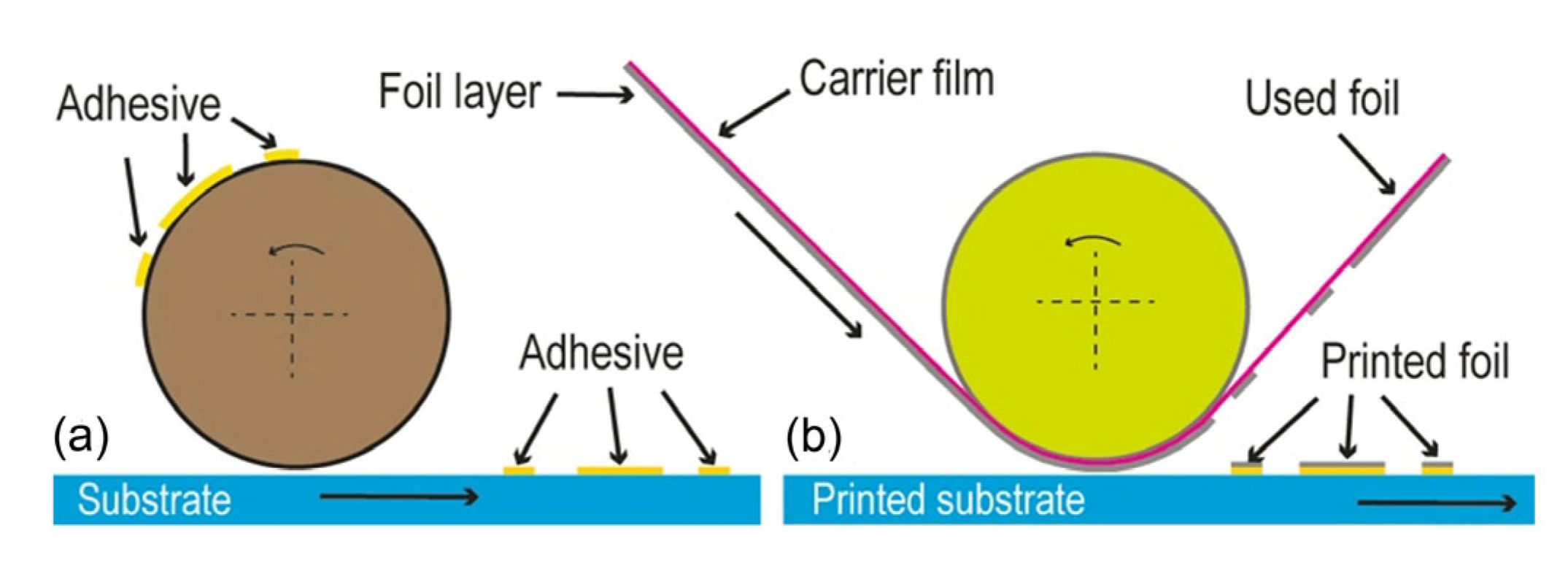
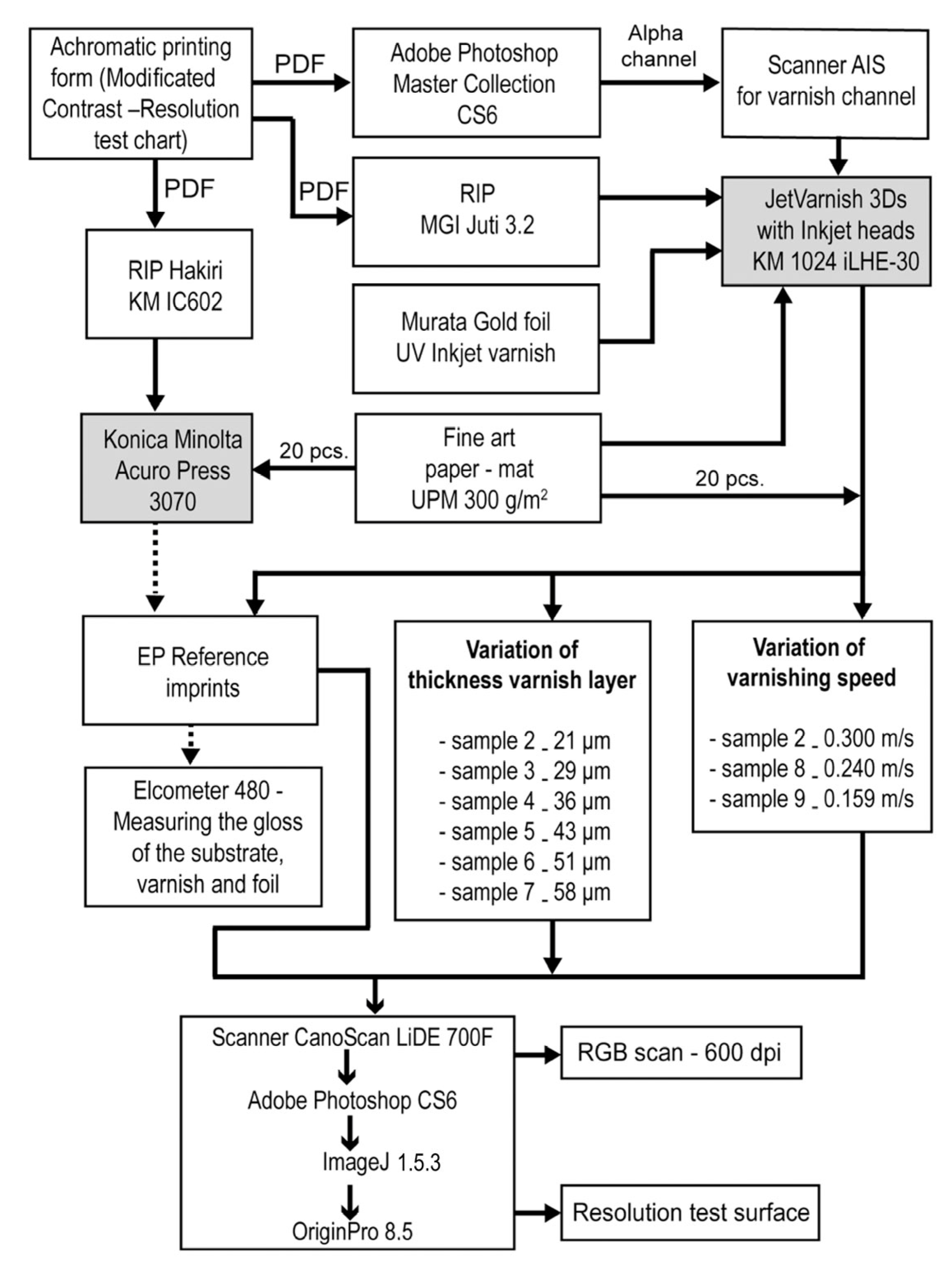
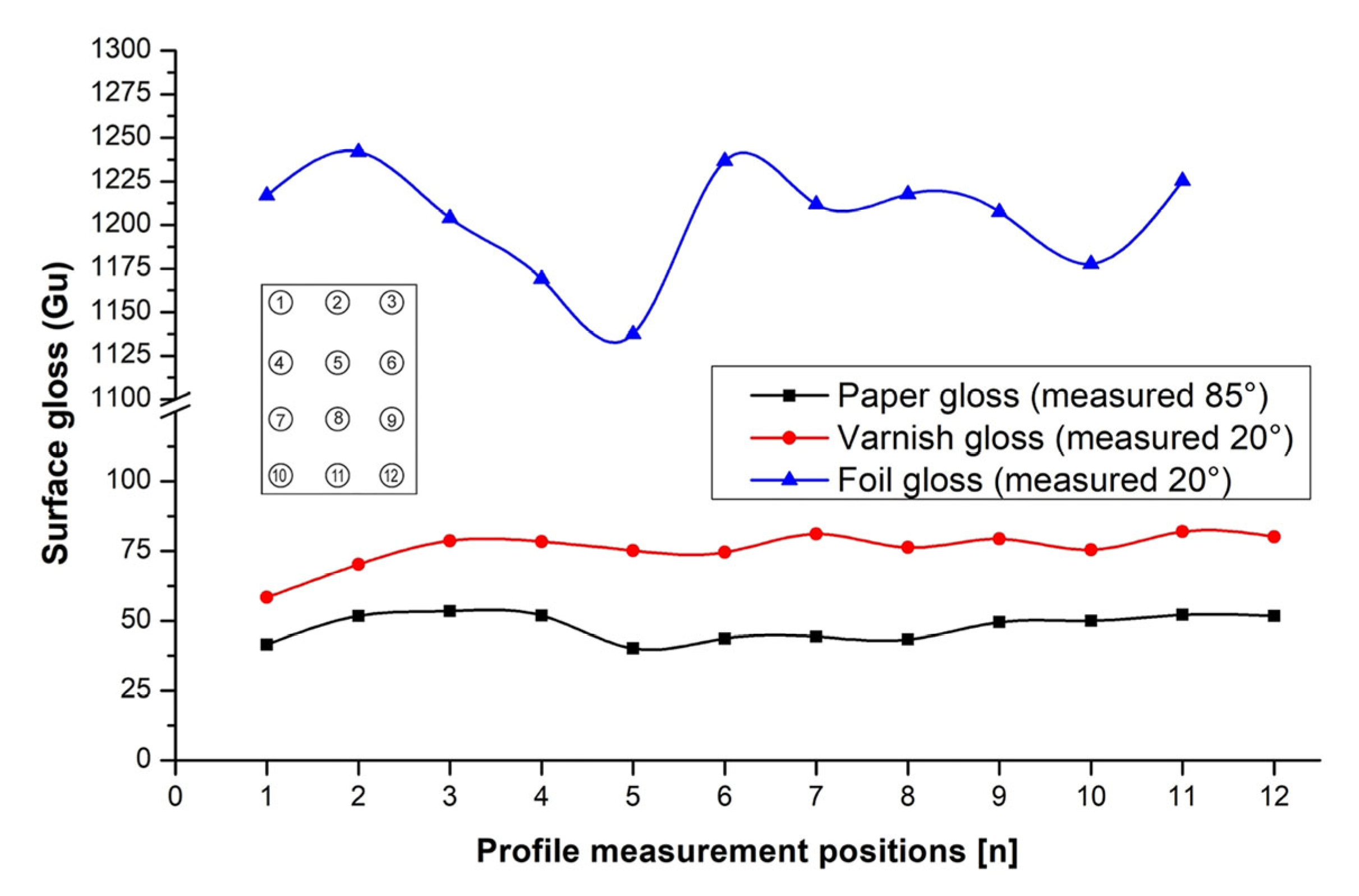
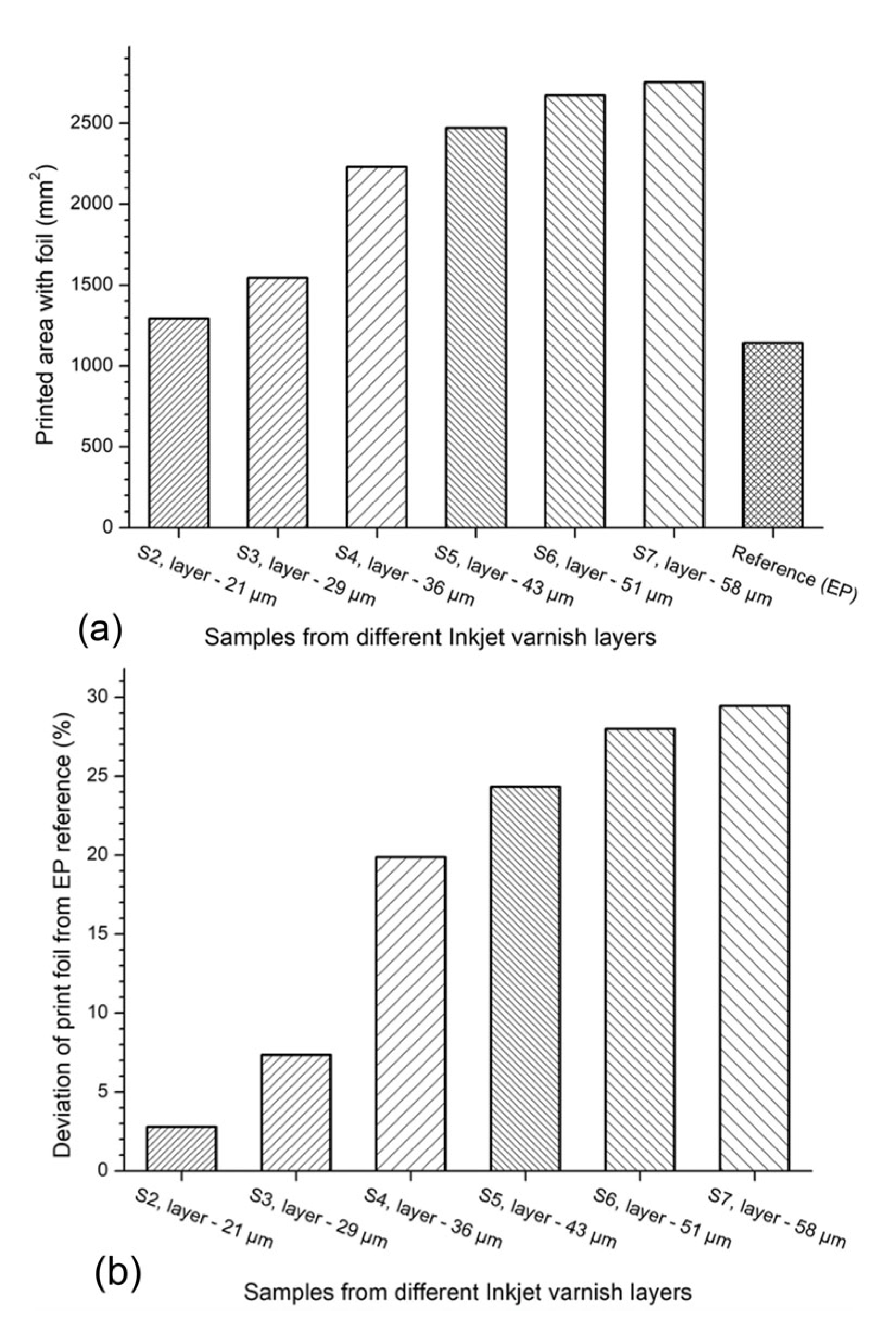



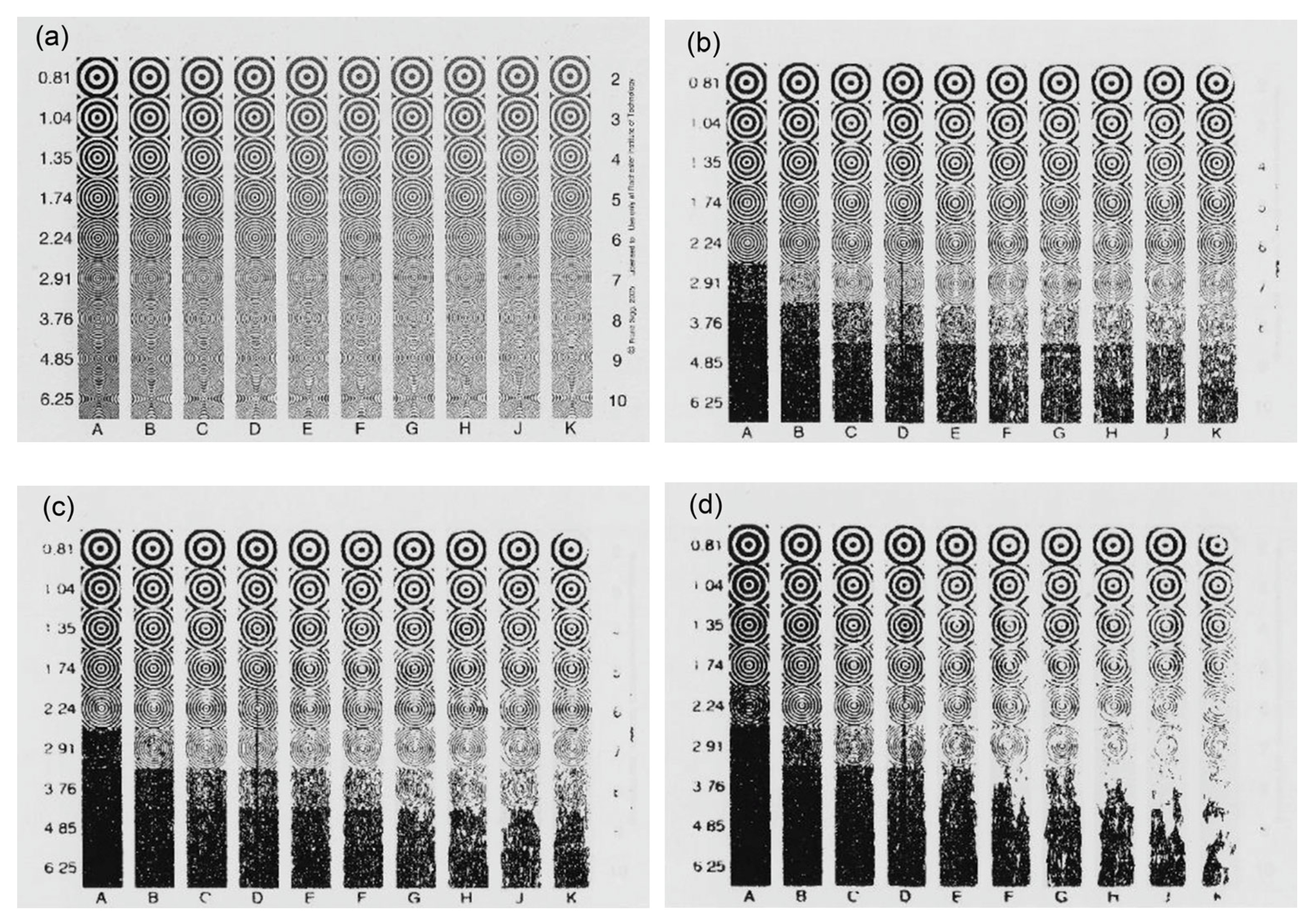
Disclaimer/Publisher’s Note: The statements, opinions and data contained in all publications are solely those of the individual author(s) and contributor(s) and not of MDPI and/or the editor(s). MDPI and/or the editor(s) disclaim responsibility for any injury to people or property resulting from any ideas, methods, instructions or products referred to in the content. |
© 2024 by the authors. Licensee MDPI, Basel, Switzerland. This article is an open access article distributed under the terms and conditions of the Creative Commons Attribution (CC BY) license (https://creativecommons.org/licenses/by/4.0/).
Share and Cite
Majnarić, I.; Morić, M.; Valdec, D.; Milković, K. The Effect of Applying UV LED-Cured Varnish to Metalized Printing Elements during Cold Foil Lamination. Coatings 2024, 14, 604. https://doi.org/10.3390/coatings14050604
Majnarić I, Morić M, Valdec D, Milković K. The Effect of Applying UV LED-Cured Varnish to Metalized Printing Elements during Cold Foil Lamination. Coatings. 2024; 14(5):604. https://doi.org/10.3390/coatings14050604
Chicago/Turabian StyleMajnarić, Igor, Marko Morić, Dean Valdec, and Katja Milković. 2024. "The Effect of Applying UV LED-Cured Varnish to Metalized Printing Elements during Cold Foil Lamination" Coatings 14, no. 5: 604. https://doi.org/10.3390/coatings14050604










